Filter by
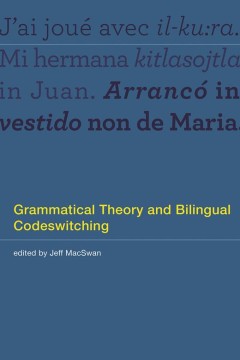
Grammatical theory and bilingual codeswitching
Theoretically significant work on the grammar of codeswitching by the leading researchers in the field. Codeswitching is the alternate use of two or more languages among bilingual interlocutors. It is distinct from borrowing, which involves the phonological and morphological integration of a word from one language into another. Codeswitching involves the mixing of phonologically distinctive …
- Edition
- -
- ISBN/ISSN
- 9780262320351
- Collation
- 1 online resource (viii, 326 pages) :illustrations
- Series Title
- -
- Call Number
- -

Types and tokens: On abstract objects
A consideration of the distinction between the spatiotemporal furniture of the world (tokens) and the types of which they are instances, and an argument that types exist. There is a widely recognized but infrequently discussed distinction between the spatiotemporal furniture of the world (tokens) and the types of which they are instances. Words come in both types and tokens—for example, th…
- Edition
- -
- ISBN/ISSN
- 9780262259279
- Collation
- 1 online resource (xvi, 180 pages) :illustrations
- Series Title
- -
- Call Number
- -
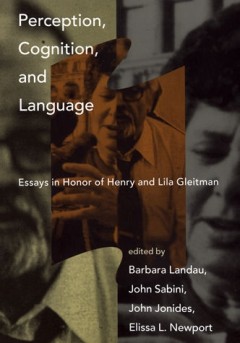
Perception, cognition, and language :essays in honor of Henry and Lila Gleitman
"A Bradford book."OCLC-licensed vendor bibliographic record.
- Edition
- -
- ISBN/ISSN
- 9780262316088
- Collation
- 1 online resource (x, 360 pages) :illustrations
- Series Title
- -
- Call Number
- -
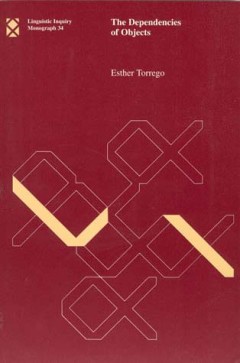
The dependencies of objects
OCLC-licensed vendor bibliographic record.
- Edition
- -
- ISBN/ISSN
- 9780262285094
- Collation
- 1 online resource (xii, 197 pages) :illustrations.
- Series Title
- -
- Call Number
- -

Distributed morphology today : morphemes for Morris Halle
"This festschrift honors Morris Halle, on the occasion of his 90th birthday, for his many foundational and lasting contributions to our understanding of morphology."This book offers a snapshot of current research in distributed morphology, highlighting the lasting influence of Morris Halle, a pioneer in generative linguistics. Distributed morphology, which integrates the morphological with the …
- Edition
- -
- ISBN/ISSN
- 9781461935650
- Collation
- 1 online resource (xvi, 262 pages)
- Series Title
- -
- Call Number
- -
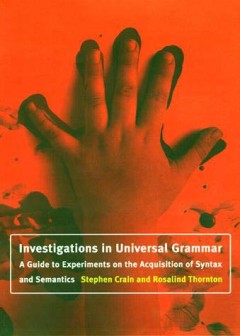
Investigations in universal grammar : a guide to experiments on the acquisiti…
This introductory guide to language acquisition research is presented within the framework of Universal Grammar, a theory of the human faculty for language. The authors focus on two experimental techniques for assessing children's linguistic competence: the Elicited Production task, a production task, and the Truth Value Judgment task, a comprehension task. Their methodologies are designed to o…
- Edition
- -
- ISBN/ISSN
- 0585360723
- Collation
- 1 online resource (ix, 342 pages).
- Series Title
- -
- Call Number
- 400 CRA i

processing and acquisition of reference
This book brings together contributions by prominent researchers in the fields of language processing and language acquisition on topics of common interest: how people refer to objects in the world, how people comprehend such referential expressions, and how children acquire the ability to refer and to understand reference.OCLC-licensed vendor bibliographic record.
- Edition
- -
- ISBN/ISSN
- 9780262295888
- Collation
- 1 online resource (vi, 443 pages) :illustrations.
- Series Title
- -
- Call Number
- -
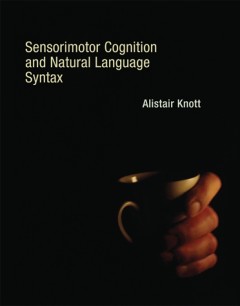
Sensorimotor Cognition and Natural Language Syntax
A proposal that the syntactic structure of a sentence reporting a concrete episode in the world can be interpreted as a description of the sensorimotor processes involved in experiencing that episode.OCLC-licensed vendor bibliographic record.
- Edition
- -
- ISBN/ISSN
- 1283707527
- Collation
- 1 online resource (xi, 392 pages) :illustrations
- Series Title
- -
- Call Number
- -
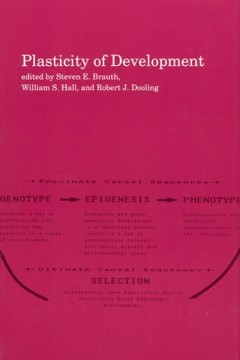
Plasticity of development
Revised papers presented at a series of lectures, during the 1986-87 academic year. Organized by the Program for Developmental Research, University of Maryland, College Park."A Bradford book."Errata slip inserted.OCLC-licensed vendor bibliographic record.
- Edition
- -
- ISBN/ISSN
- 9780262269193
- Collation
- 1 online resource (viii, 182 pages) :illustrations
- Series Title
- -
- Call Number
- -

Linguistics for the Age of AI
A human-inspired, linguistically sophisticated model of language understanding for intelligent agent systems. One of the original goals of artificial intelligence research was to endow intelligent agents with human-level natural language capabilities. Recent AI research, however, has focused on applying statistical and machine learning approaches to big data rather than attempting to model w…
- Edition
- -
- ISBN/ISSN
- 9780262363136
- Collation
- -
- Series Title
- -
- Call Number
- -
 Computer Science, Information & General Works
Computer Science, Information & General Works  Philosophy & Psychology
Philosophy & Psychology  Religion
Religion  Social Sciences
Social Sciences  Language
Language  Pure Science
Pure Science  Applied Sciences
Applied Sciences  Art & Recreation
Art & Recreation  Literature
Literature  History & Geography
History & Geography